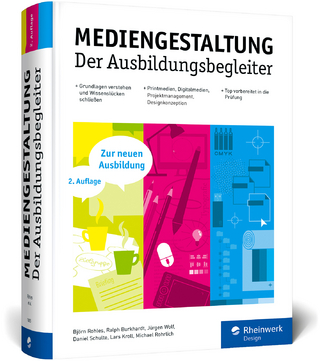
Simulation Techniques of Digital Twin in Real-Time Applications
Wiley-Scrivener (Verlag)
978-1-394-25697-6 (ISBN)
Divided into two parts with Part 1 focusing on simulated techniques in digital twin technology and Part 2 on real-time applications of digital twin technology, the book collects a significant number of important research articles from domain-specific experts. The book sheds light on the various techniques of digital twin technology that are implemented in various application areas. It emphasizes error findings and respective solutions before the actual event happens. Most of the features in the book are on the implementation of strategies in real-time applications. Various real-life experiences are taken to show the proper implementation of simulation technologies. The book shows how engineers of any technology can input their research ideas to convert to real scenarios by using replicas. Hence, the book has a collection of research articles from various engineers with expertise in different technologies from many regions of the world. It shows how to implement the embedded real-time data into technologies.
Specifically, the chapters relate to the auto landing and cruising features in aerial vehicles, automated coal mining simulation strategy, the enhancement of workshop equipment, and implementation in power energy management for urban railways. This book also describes the coherent mechanism of digital twin technologies with deep neural networks and artificial intelligence.
Audience
Researchers, engineers, and students in computer science, software engineering and industrial engineering, will find this book to be very useful.
Abhineet Anand, PhD, is a director at Chandigarh University, Punjab, India. His research focuses on cloud computing, load balancing, and clustering. He has published in several international and national journals and contributes to various conferences as a technical program committee member. Anita Sardana, PhD, is an associate professor of computer science at Chandigarh University, Punjab, India. She has about 10 years of teaching experience and 8+ years of industry experience. Her industry experience includes patent searching, prosecution, and licensing for both Indian and US jurisdictions. She has filed four design patent applications, one utility patent application, and has published 18 research papers in national and international conferences and journals. Her one design patent was granted in 2023. Abhishek Kumar, PhD, is an associate professor in the Computer Science & Engineering Department at Chandigarh University, Punjab, India, and is affiliated with the University of Castilla-La Mancha (UCLM), Toledo, Spain. His research areas include artificial intelligence, renewable energy, image processing, and machine learning. In total, he has more than 100 publications in peer-reviewed journals. Kumar is a keynote speaker and a member of various national and international societies in the field of engineering and research. He was awarded the CV Ramen National Award in 2018 in the young researcher and faculty category. Srikanta Kumar Mohapatra, PhD, is an associate professor at Chitkara University, Institute of Engineering and Technology, Punjab, India. His research focuses on artificial intelligence, machine learning, and computational nanotech. Along with publishing 3 books and several research articles, Mohapatra is a member of the editorial board of several journals. Shikha Gupta, PhD, is a professor in computer science at Chandigarh University, Punjab, India. Her research interests focus on data analytics, artificial intelligence, data mining, and machine learning. She has about 25 years of teaching experience and published several papers in national and international journals, and has authored books in computer science domains.
Preface xv
Part 1: A Guide to Simulated Techniques in Digital Twin 1
1 Introduction to Different Simulation Techniques of Digital Twin Development 3
Suvarna Sharma and Chetna Monga
2 Comprehensive Analysis of Error Rate and Channel Capacity of Fisher Snedecor Composite Fading Model 25
Hari Shankar and Yogesh
3 Implementation of Automatic Driving Car Test Approach Based on a Digital Twinning Technology and by Embedding Artificial Intelligence 57
Pranjal Shukla, Chahil Choudhary, Anurag and Jatin Thakur
4 Intelligent Monitoring of Transformer Equipment in Terms of Earlier Fault Diagnosis Based on Digital Twins 87
Satyabrata Sahoo
5 Digital Twin System for Intelligent Construction of Large Span Assembly Type Steel Bridge 107
Sucheta
6 Digital Twin Application on System Identification and Control 123
Rakesh Kumar Pattanaik and Mihir Narayan Mohanty
Part 2: Real Time Applications of Digital Twin 163
7 Digital Twinning-Based Autonomous Take-Off, Landing, and Cruising for Unmanned Aerial Vehicles 165
Kiran Deep Singh, Prabhdeep Singh and Mohit Angurala
8 Execution of Fully Automated Coal Mining Face With Transparent Digital Twin Self-Adaptive Mining System 183
Bharat Tripathi, Nidhi Srivastava and Amod Kumar Tiwari
9 MGF-Based BER and Channel Capacity Analysis of Fisher Snedecor Composite Fading Model 195
Hari Shankar and Yogesh
10 Precision Agriculture: An Augmented Datasets and CNN Model-Based Approach to Diagnose Diseases in Fruits and Vegetable Crops 215
Sparsh Mehta, Gurwinder Singh and Yogiraj Anil Bhale
11 A Simulation-Based Study of a Digital Twin Model of the Air Purifier System in Chandigarh Using LabVIEW 243
Jyoti Verma, Monika Sethi, Vidhu Baggan, Manish Snehi and Jatin Arora
12 Use of Digital Twin in Predicting the Life of Aircraft Main Bearing 261
Urvashi Kumari and Pooja Malhotra
13 Power Energy System Consumption Analysis in Urban Railway by Digital Twin Method 289
K. Sreenivas Rao, P. Harini, Srikanta Kumar Mohapatra and Jayashree Mohanty
14 Based on Digital Twin Technology, an Early Warning System and Strategy for Predicting Urban Waterlogging 301
Shweta Thakur
15 Advanced Real-Time Simulation Framework for the Physical Interaction Dynamics of Production Lines Leveraging Digital Twin Paradigms 319
Neha Bhati, Narayan Vyas, Vishal Dutt, Ronak Duggar and Aradhya Pokhriyal
Index 345
| Erscheinungsdatum | 23.08.2024 |
|---|---|
| Sprache | englisch |
| Gewicht | 771 g |
| Themenwelt | Mathematik / Informatik ► Informatik ► Grafik / Design |
| Technik ► Elektrotechnik / Energietechnik | |
| ISBN-10 | 1-394-25697-3 / 1394256973 |
| ISBN-13 | 978-1-394-25697-6 / 9781394256976 |
| Zustand | Neuware |
| Haben Sie eine Frage zum Produkt? |
aus dem Bereich


